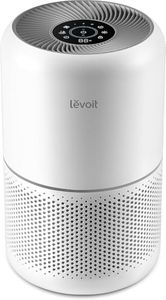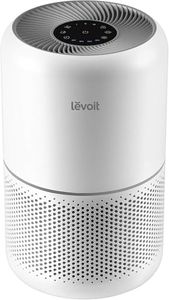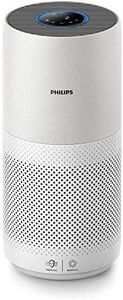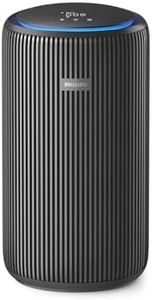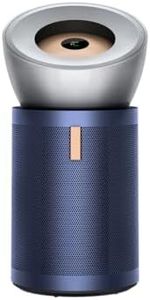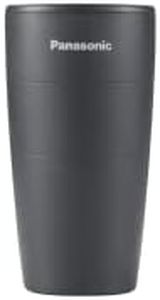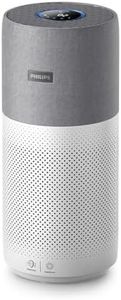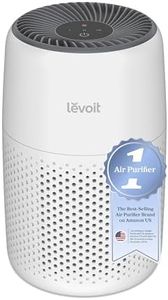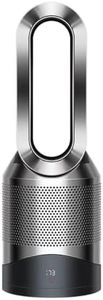We Use CookiesWe use cookies to enhance the security, performance,
functionality and for analytical and promotional activities. By continuing to browse this site you
are agreeing to our privacy policy
10 Best Hepa Air Purifiers
From leading brands and best sellers available on the web.Buying Guide for the Best Hepa Air Purifiers
Choosing a HEPA air purifier is all about making sure the air in your room or space becomes cleaner and healthier to breathe. HEPA stands for High Efficiency Particulate Air, which means these purifiers are designed to catch very tiny particles like dust, pollen, pet dander, and even some bacteria and viruses. When looking for the best fit for your needs, you’ll want to match the purifier to the size of your space, think about the type of pollutants you want to target, and also consider how often and how thoroughly you want the air to be cleaned. By understanding the main specifications, you’ll be better equipped to pick a purifier that fits your lifestyle and environment.True HEPA FilterA True HEPA filter is a filter capable of capturing at least 99.97% of particles as small as 0.3 microns. This standard is important because it ensures that the purifier actually removes really tiny airborne pollutants, rather than just bigger dust or hair. There are products labeled as 'HEPA-type' or 'HEPA-like,' but only those labeled 'True HEPA' meet this strict filtration level. If you have allergies or asthma, or want the highest level of particle removal, choosing a model with a True HEPA filter is essential. For those who are healthy and mainly concerned with dust, a HEPA-type may suffice, but True HEPA is generally the gold standard.
CADR (Clean Air Delivery Rate)CADR is a rating that tells you how much filtered air a purifier can deliver per minute, typically measured in cubic feet per minute (CFM). It directly relates to how fast and efficiently the purifier can clean air in a room. Higher CADR numbers mean better performance for large spaces and faster purification. For smaller bedrooms or offices, a lower CADR can suffice; for bigger rooms or open spaces, look for higher CADR values. Ideally, match the CADR to your room size—many brands provide a guideline for this.
Room CoverageRoom coverage indicates the maximum recommended room size a purifier can handle while still effectively cleaning the air. It's usually stated in square feet or meters. If you choose a purifier that's too small for your space, it won't clean the air effectively; going too large is generally fine but may be more than you need. Measure your room and choose a purifier that lists a coverage area matching or slightly exceeding that size.
Filter Replacement Frequency and CostHEPA purifiers work best when their filters are clean. Over time, filters become clogged with particles, which can reduce efficiency and increase operating costs. Check how often the manufacturer recommends changing the filter, as well as the cost and availability of replacements. If you’re someone who wants a low-maintenance device, seek purifiers with longer filter life or indicators that alert you when it’s time to replace.
Noise LevelNoise levels are measured in decibels (dB) and tell you how loud the purifier will be during operation. Lower dB means quieter operation, which can be important if you plan to use your purifier in a bedroom, office, or other quiet environment. Many purifiers offer multiple speeds; noise will be lower at lower speeds. If silence is important to you, look for a model with a low minimum noise level.
Additional Filters (Carbon/Activated Carbon)Some HEPA air purifiers also include activated carbon filters, which target odors and gases such as smoke, cooking smells, and volatile organic compounds (VOCs). These filters are essential if you’re trying to remove bad smells or chemicals in addition to dust and allergens. If you mainly want to get rid of particles, a basic HEPA filter is enough, but for odors and smoke, look for a purifier with both HEPA and activated carbon filters.
Energy ConsumptionEnergy consumption tells you how much electricity the purifier uses, usually listed in watts. If you plan to run your purifier for long periods, lower energy consumption will help save on utility bills. For those using the purifier only occasionally, energy may not be a big issue, but for all-day, everyday use, choosing an energy-efficient model is wise.


